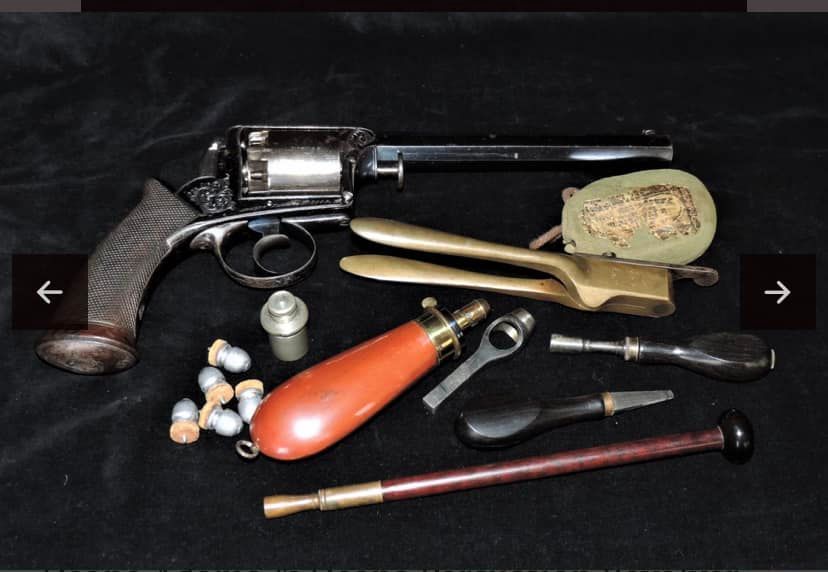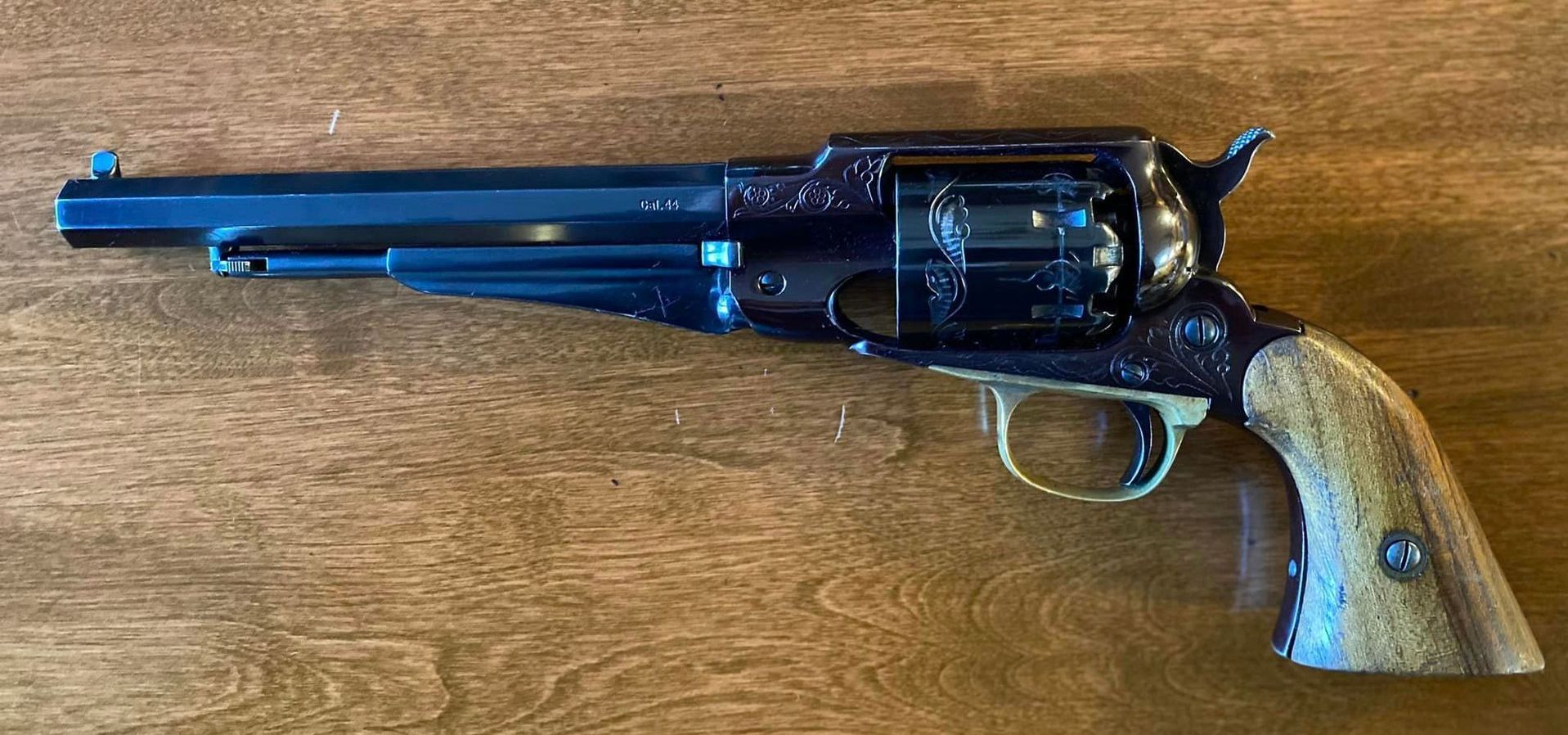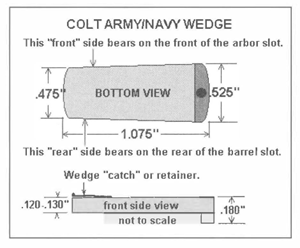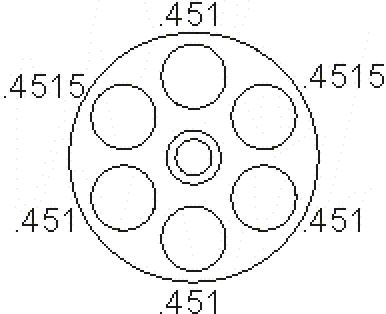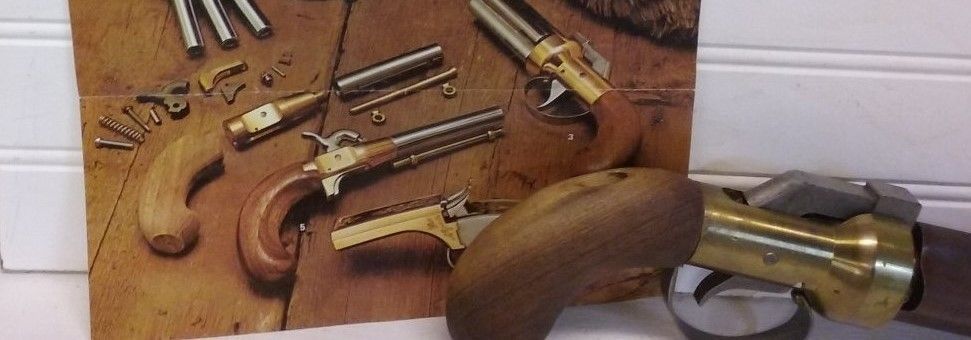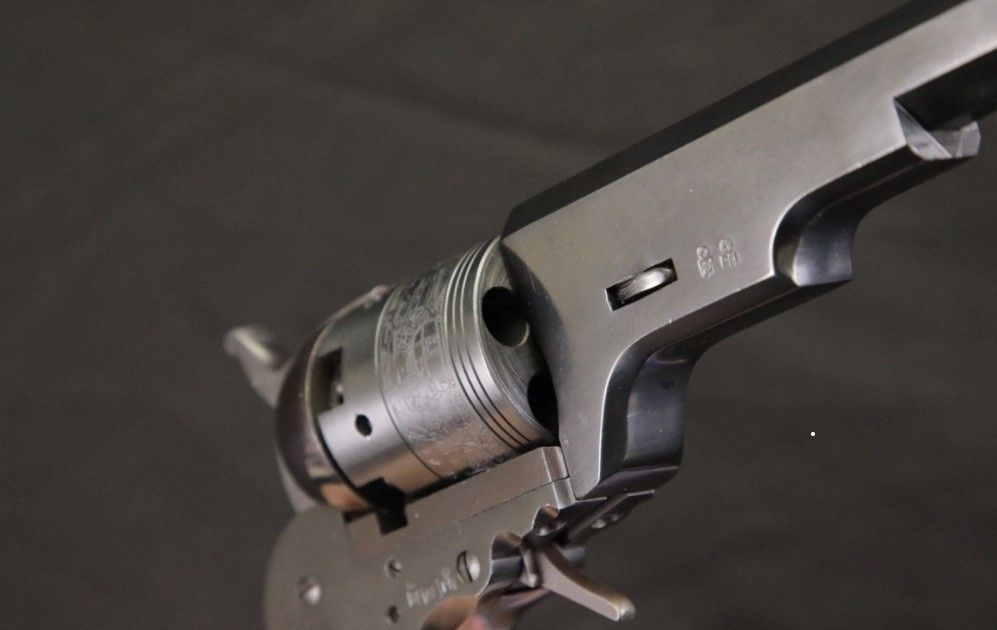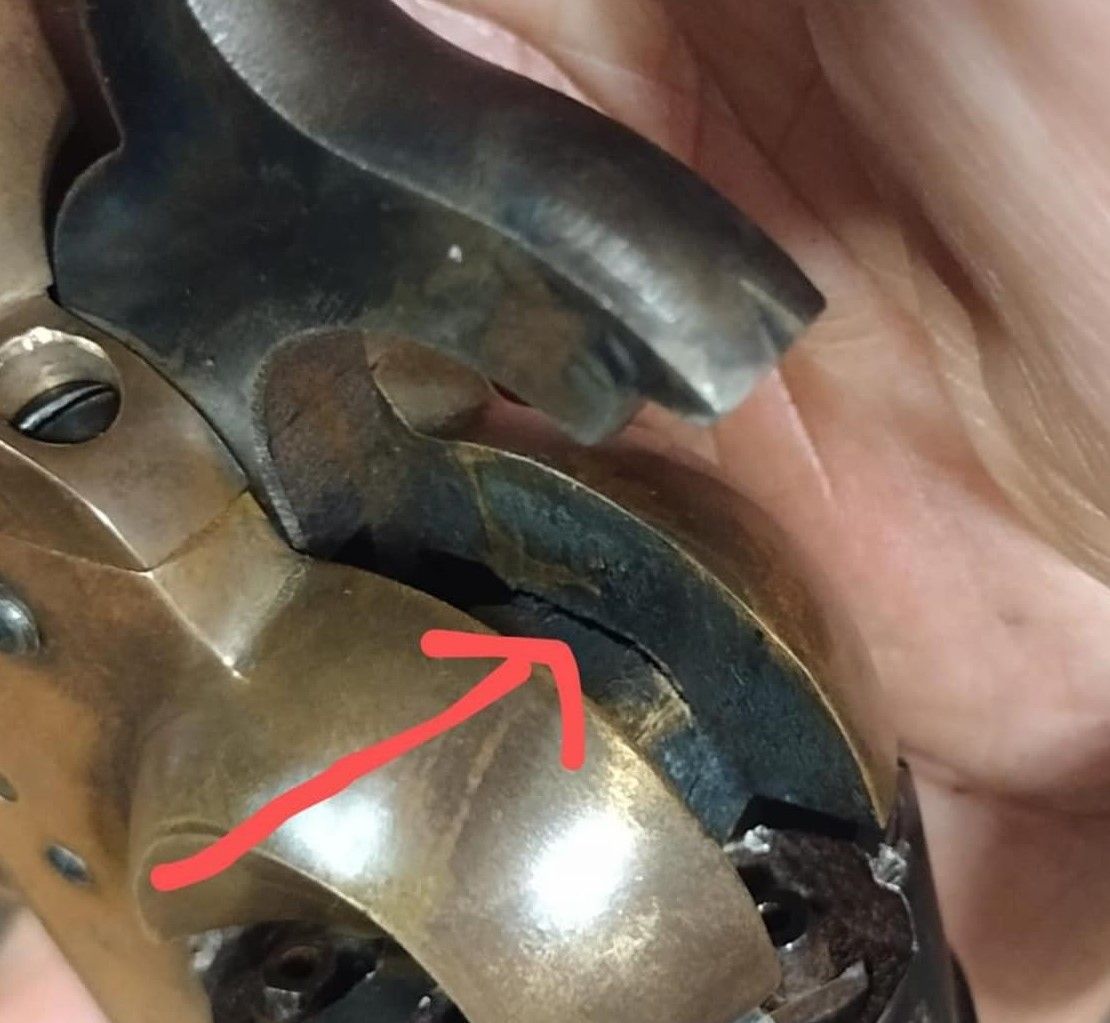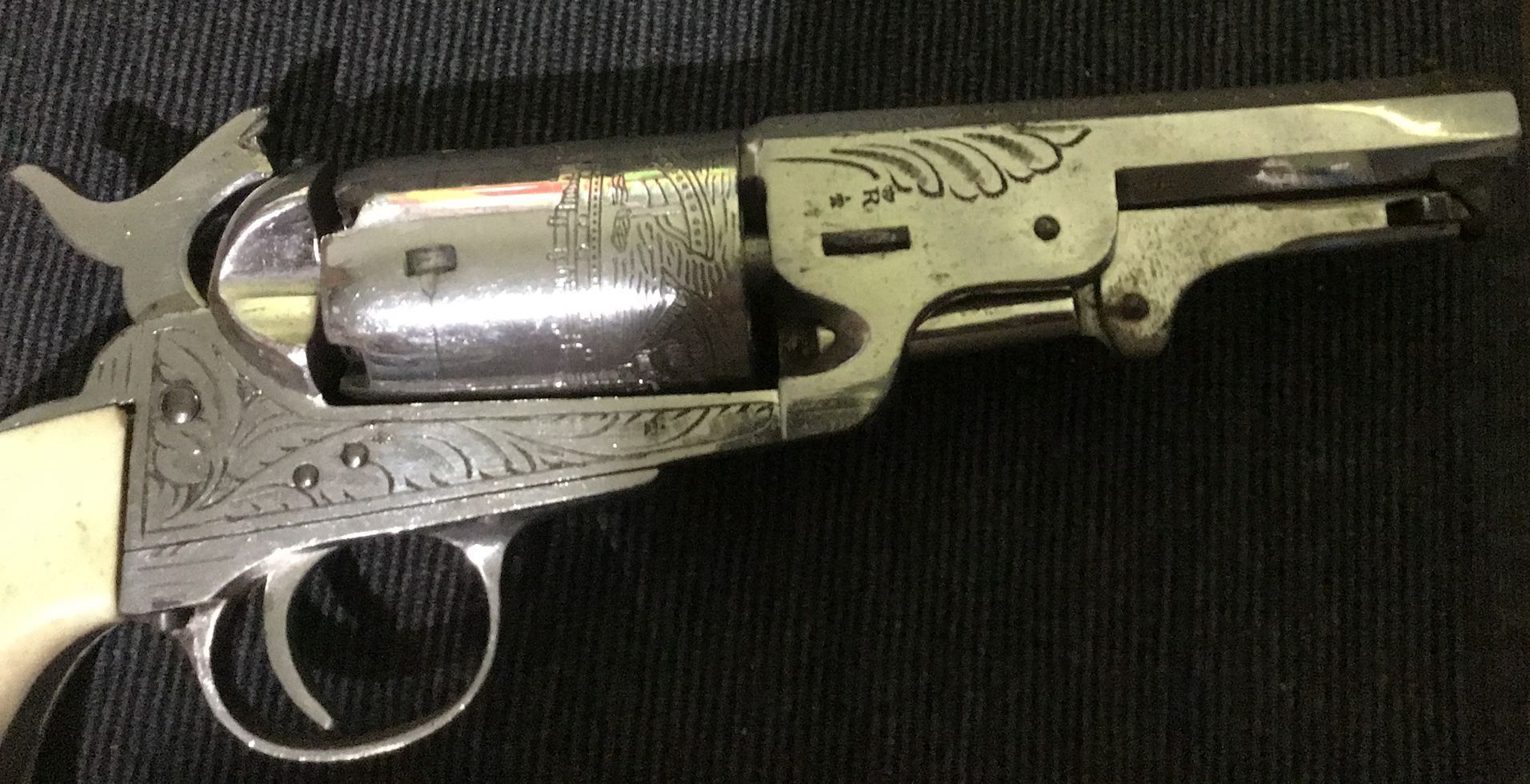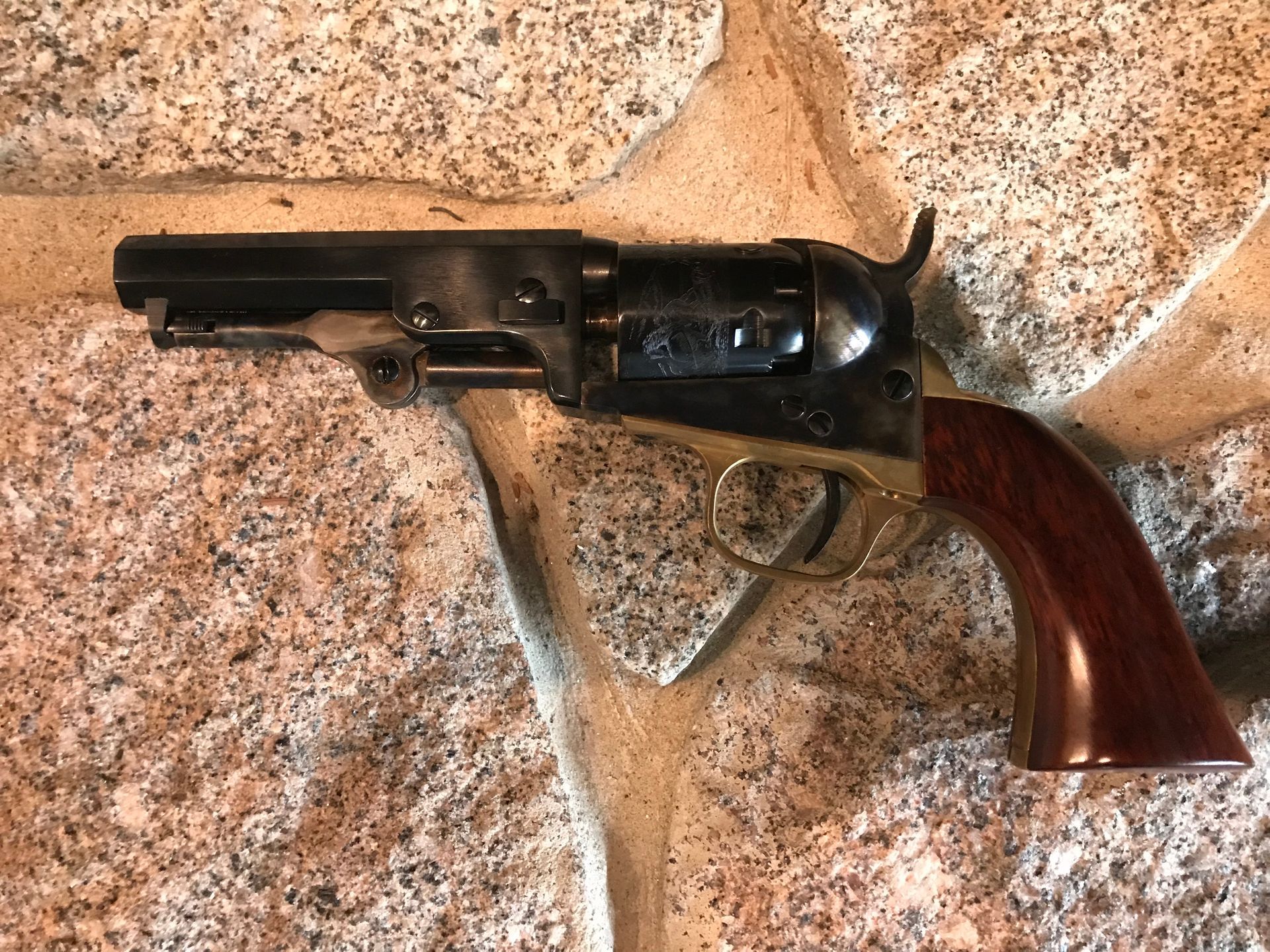American Manufacturers of Replica Revolvers
American Manufacturers of Replica Revolvers
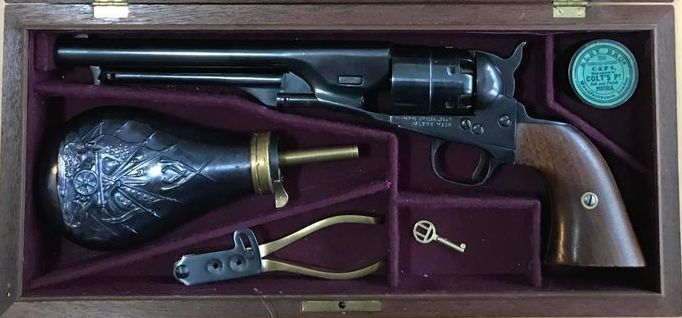
Thanks to the research of Dr. Jim Davis and his extensive notes he put together on the history of reproduction revolvers, we know of several American manufacturers of reproduction revolvers that came before the Italian manufacturers. There were several American manufacturers of replica revolvers that did not use any Italian parts.
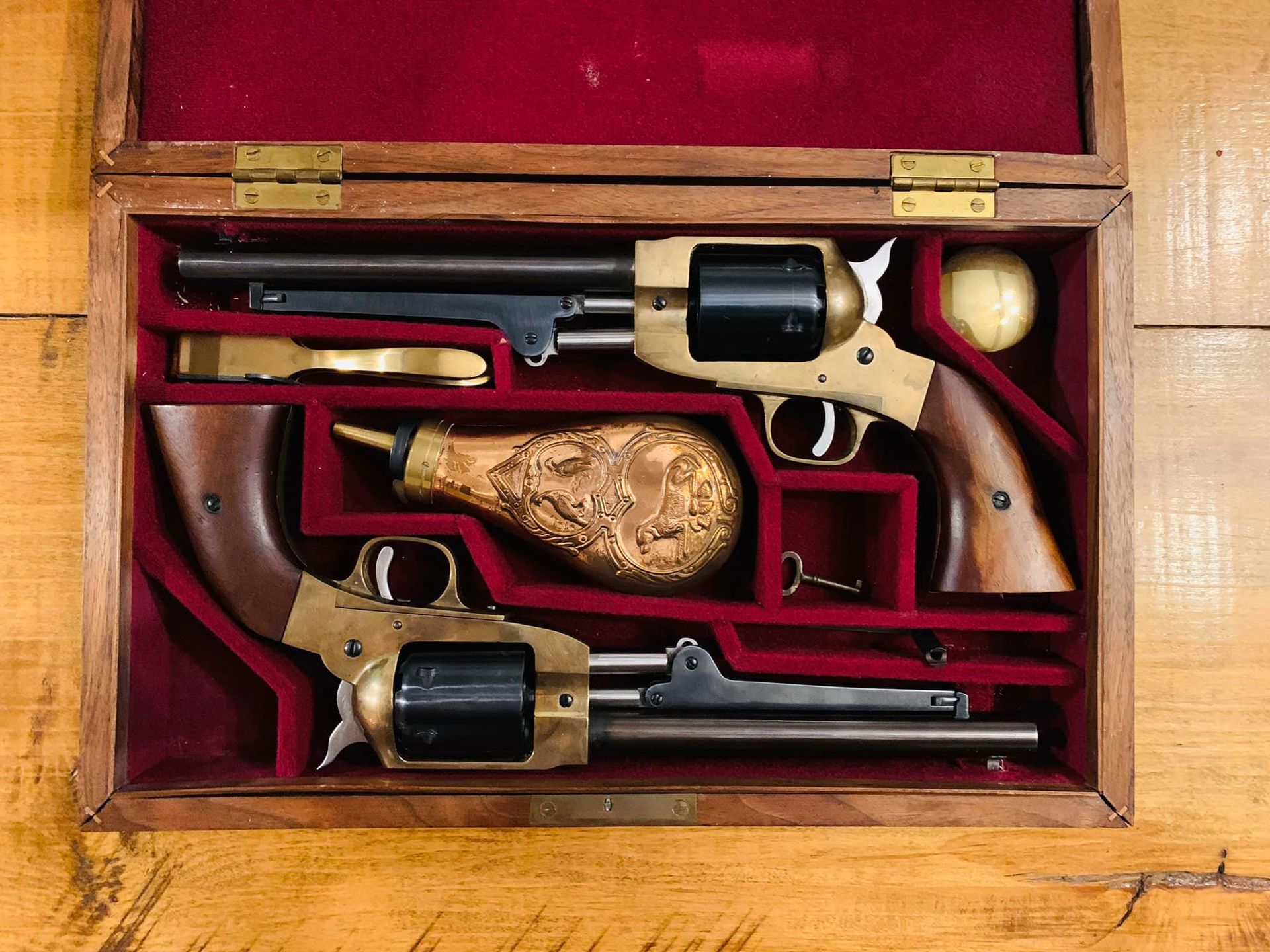
The first was
L.A. Jensen in Lake City, FL., who produced a replica Spiller & Burr (above) in the early 1950's. He produced it in .44 cal. in order to not be confused with the original. These were of excellent quality. Many were sold as cased sets. Only five of these revolvers have surfaced as of 2010. L. A. Jensen made the very first production replica in 1952. There were fewer than 100 produced and were the very first replica revolvers produced. They were produced from 1952-1960, predating Navy Arms by some 8 years As previously stated, they were in .44 cal rather than the .36 cal as the original Spiller & Burr. From postings on various black powder forums Dr. Davis had located serial numbers #0049 and #0029. He bought #0026 & #0027 in a cased set on Gun Broker in October, 2002 for $300.
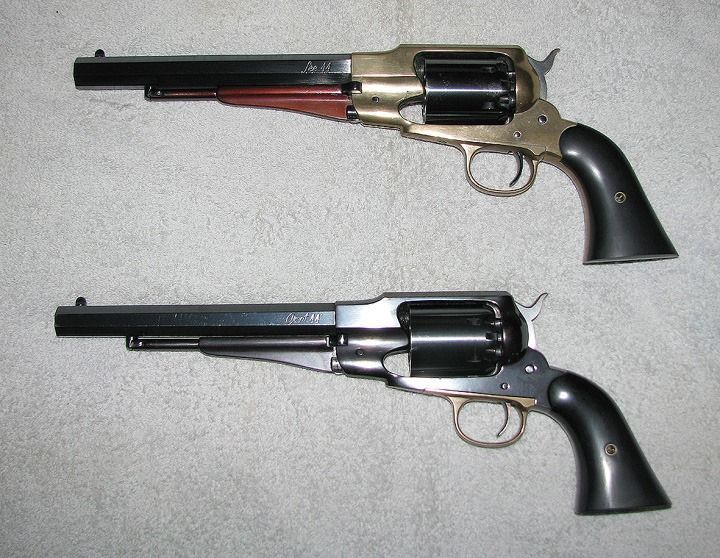
The second manufacturer was Witloe Precision Inc. in Collingdale, PA, who produced the Remington New Model Army as the “Grant Model” and the “Lee Model”. The Grant Model had a steel frame and the Lee Model had a silicone bronze frame. These were the very first Remington New Model Army replicas manufactured by anyone. Witloe Precision Inc. discontinued making these revolvers after only two years because of the cheaper cost of the Italian revolvers. R. T. Lane of Poughkeepsie, N.Y. purchased the remaining inventory of partially assembled revolvers and parts. These revolvers are marked WITLOE COLLINGDALE, PA. in two lines on top of the barrel. Lane was given the right to only use the WITLOE name since Witloe Precision Inc. was still in business with government contracts. Because of the exceptional quality of the revolvers, R. T. Lane targeted the competitive shooter as his market, so most "2nd Generation" Witloes have target sights. So far only twenty 1st & 2nd Generation Witloes have surfaced.
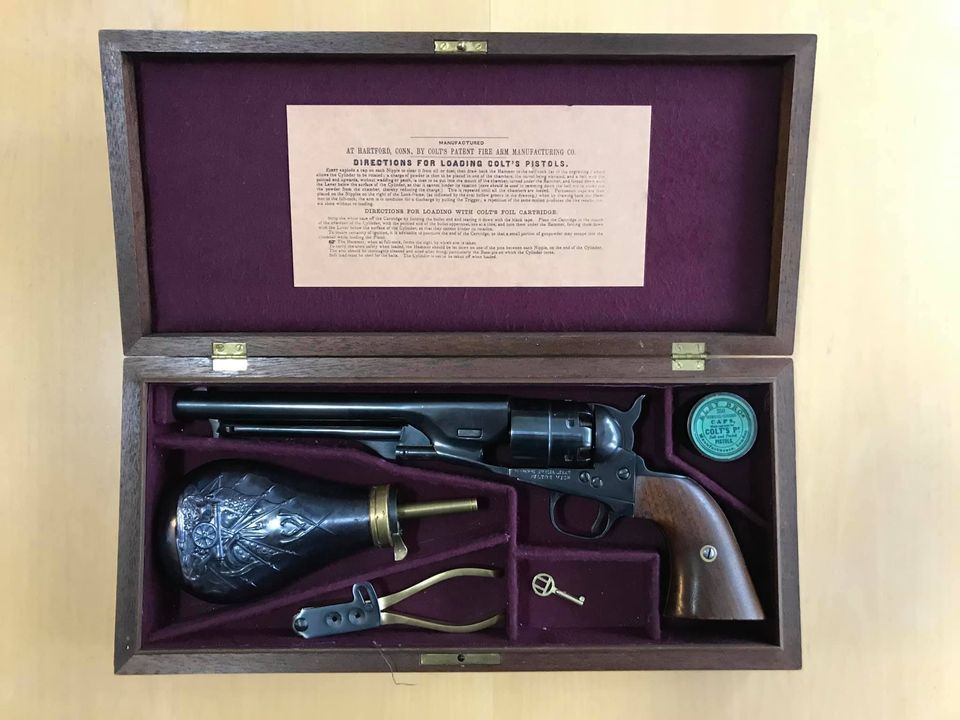
The third manufacturer was
R. G. Wilson, of Firearms Specialties in Michigan that produced an 1860 Army. This was around 1959, just when William B. Edwards was setting the ground work for the Centennial 1860 Army to be manufactured in Belgium as the 1960 New Army. Only one of these revolvers has surfaced that we are aware of. It bears the serial number 7. All three of these pioneer American Companies met their demise because they could not compete with the prices of the Italian manufactured revolvers.
There were also a couple of manufacturers back in the 1940’s and 1950’s and possibly later who produced revolvers on special order or in very limited numbers. Here is a revised outline of these American manufacturers.
A. American Manufacturers
a.
All American Made Special Order or Limited Production
1. Penrod Otis Musser - Paterson Revolvers
2. Thomas Haas Sr./Horacio Acevedo - 1847 Walker, Etc.
b.
All American Made
1. Firearm Specialties
2. L. A. Jensen
3. Witloe Precision Inc.
4. Witloe/Lane - Second Generation
c.
American Assembled and Finished
1. Colt 2nd Generation
2. Colt Black Powder
3. High Standard
4. U. S. Firearms Manufacturing Co. (USFA)
5. U. S. Patent Fire-Arms Manufacturing Co.
d.
American Made Modern Design (Not Replicas)
1. Great Western
2. Strum, Ruger & Co. (Ruger Old Army)
Other companies produced replicas using parts made by Uberti, Armi San Marco, and Palmetto. They were:
High Standard who produced a series of Confederate Models. These were made from parts obtained from various Italian manufacturers and finished in house.
Colt 2nd Generation revolvers had the barrels, cylinders and backstraps cast from rough forged parts obtained from Italian manufacturers in the “C” Series, then finished and assembled at the Colt factory and the “F” Series assembled at the Iver Johnson factory.
Colt 3rd Generation revolvers were produced by Colt Blackpowder Arms under license from Colt. All were assembled from parts obtained from Italian manufacturers, very much like the High Standard revolvers..
U. S. Patent Fire-Arms Manufacturing Co. and U. S. Firearms Manufacturing Co. (USFA) produced a limited replicas in 1851 Navy, 1860 Army, and the 3rd Model Dragoon. These were made from both complete guns and parts obtained from Uberti. These are very rare.
Last but not least was the Ruger Old Army produced by
Sturm, Ruger & Co., Inc., which is not a replica of any historic percussion revolver, but a modern percussion revolver. The Ruger Old Army was introduced in 1972 by the Strum, Ruger company and manufactured through 2008 with an MSRP of arounf $560. It is no longer available from Ruger, but they do appear on the secondary market from time to time at hefty price tags. The ROA (Ruger Old Army) was based off the frame of the Ruger Blackhawk, which was based off the Colt SAA. The ROA looks a little like the Remignton New Army and is generally compared to it. But, the ROA is a modern percussion revolver and is not a replica of anything. It was built to SAAMI specs, meaning the revolver was tested by loading each chamber to capacity with Bullseye smokeless powder and a lead ball. While this would result in catastrophic failure in black powder replicas, the Old Army was designed to be strong enough to handle the pressure of smokeless loads. So there is no comparison between the ROA and a percussion replica. These were shooters only as they did not qualify for use in reenactment, etc.
Great Western attempted to enter the replica market with a hybrid revolver based on the Remington New Model Army but it never got produced.
At present there are no replica percussion revolvers being made or assembled in the U.S. There were several custom gunsmiths that made replicas on special order but these are not included as production replicas.
